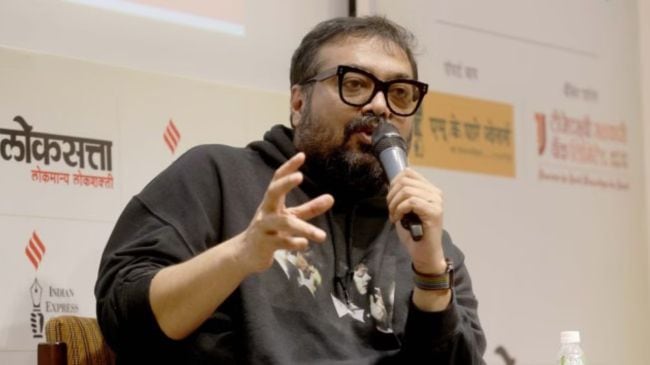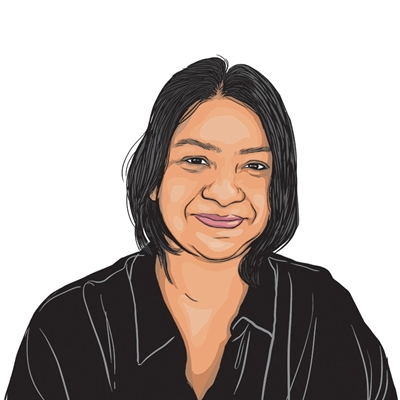Opinion Chiranjeevi Hanuman and Anurag Kashyap: The false choice of the AI vs artists controversy
Creative artists of all kinds are often resentful of AI. Here are some of the reasons why such resentment is misplaced
 AI democratisation will change how artists operate. Success in creative industries is presented as the rise of talent, but from the Academy Awards to the Grammys to prestigious fests and awards, it’s no secret that the status of star artists is established by lobbying, clout, investment in image, marketing, and media. This will no longer work.
AI democratisation will change how artists operate. Success in creative industries is presented as the rise of talent, but from the Academy Awards to the Grammys to prestigious fests and awards, it’s no secret that the status of star artists is established by lobbying, clout, investment in image, marketing, and media. This will no longer work. Filmmaker Anurag Kashyap posted on his social media a heated opinion on actor Vijay Subramaniam, who heads the Collective Artists Network, and has just put out the trailer to the “Made-In-AI” film, Chiranjeevi Hanuman-The Eternal. Kashyap felt it a betrayal from someone charged with standing up for creative artists. His resentment is indicative of creative artists increasingly at odds with artificial intelligence.
How dire is the confrontation anyway? MIT’s Project NANDA reveals that despite US companies investing between $35-40 billion in generative AI, 95 per cent of enterprise organisations have had zero return from their AI efforts. Based on 52 interviews and 300 public AI initiatives, the report finds that AI is creating a shadow economy that aids the individual, leaving organisations and industries struggling.
Research by Oliver Hauser and Anil Doshi found that when 300 writers were given access to generative AI, their stories were evaluated by other writers to be more creative, better written, and more enjoyable. Evaluating creativity on two parameters, novelty and usefulness, they found that AI offered a “springboard” for ideas and helped jump mental blocks. However, the stories also sounded similar to each other. Again, individual creativity was enhanced, while collective diversity declined.
The individual benefits from AI, but industries suffer. This is the source of the dilemma.
AI democratisation will change how artists operate. Success in creative industries is presented as the rise of talent, but from the Academy Awards to the Grammys to prestigious fests and awards, it’s no secret that the status of star artists is established by lobbying, clout, investment in image, marketing, and media. This will no longer work. It may well be toppled by a canny marketer, like “author” Alex Hormozi who broke the Guinness record for the fastest-selling non-fiction book, $100M Money Models[2] making an estimated $150M from over 3.5 million copies sold in August — all by creating an agentic model to sell a book that tells you how to sell a book using an agentic model and livestreaming his process.
Like it or not, AI-generated books accounted for 3 per cent of newly published digital titles globally. According to the European Writers’ Council, 80 out of 100 books on Amazon Kindle e-publishing are AI-generated and pushed by bot farms to the bestseller list. The FBI began investigating pump-and-dump publishing companies, and Amazon responded by implementing a daily limit of three book publications per author. For all the handwringing, the market is set to grow by $19.3 billion, with 54 per cent of publishers using generative AI and 30 per cent actively adopting AI tools to meet diverse demands.
Hollywood has been more hesitant to embrace AI — developing guidelines following the 2023 labour protests — than Indian cinema. Intelliflicks Studios, Chandigarh, is creating what it claims is the world’s first AI-generated feature film, Maharaja in Denims, set for a 2025 release. Actor Ajay Devgn has launched an AI company, and Oscar-winning music directors AR Rahman and MM Keeravaani, too, have used AI, the former to recreate the voices of deceased singers. Tamil filmmaker Guhan Senniappan used AI to create an anime-style flashback sequence for his superhero film Weapon and the controversial AI-altered re-release of Raanjhanaa by Eros International, which changed the film’s tragic ending, sparking industry uproar by overriding artistic consent.
The reality is more nuanced than “AI bad, artist good”. We still use calculators, word processors, Google-optimised searches, special effects and CGI animation to aid creativity and research, and enhance the creative experience. AI needs optimal deployment. As Jamie Umpherson from AI video startup Runway notes, “the most successful AI video projects are those that understand the technology’s limitations and lean into them to enhance storytelling”. The challenge is in establishing a collaborative relationship between human creativity and artificial intelligence.
Kashyap is not wrong to be worried, but he is also not right, paradoxically. Much of the resistance to AI clings to an old way of working. If we can get answers quicker by AI intervention, why are we obliged to suffer time? Denial diminishes the capacity for truth-telling. Seeing it as it is is a greater artistic mandate than copyright, sales, fame, and monetisation.
Misconceptions arise due to unfamiliarity. AI is no more a replacement for creativity than the computer is for pure mathematics research. AI also requires more complexity than hitting a button. Prompt engineering is a fine-tuning activity of great precision. Just as you wouldn’t task an intern with a final edit, even if you ask them to draft and ideate, refined direction is required. A film or book is not the output of one person. AI needs skill and lateral deployment to work well. The “failure” of industry to implement AI comes from the misconception that it is an install-and-go kit to enable layoffs of the task force with a ChatGPT subscription.
The public chatter on AI sentience is also misguiding. AI is fed on human input and mirrors patterns in human thought and knowledge. At 1.76 trillion parameters, its best neural network is still far less capable than the human brain at 600 trillion synapses. Just as Andy Warhol once did, contemporary artists like Nam June Paik, the “father of video art”, Olafur Eliasson and Jon Rafman use technology artistically without diminishing their uniqueness.
The artist vs AI is a false opposition. If the artist is Prometheus stealing fire, AI is Pandora opening a box to a whole new world.
Das is a Mysuru-based author, therapist, independent AI researcher & co-founder of Project Shunyata, a group that examines AI through the lens of Buddhist Philosophy




